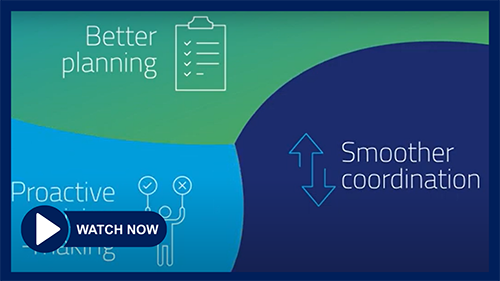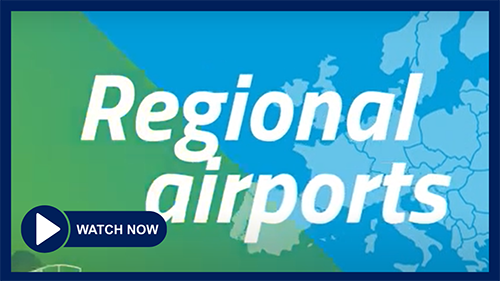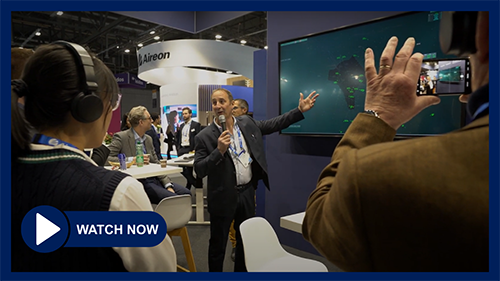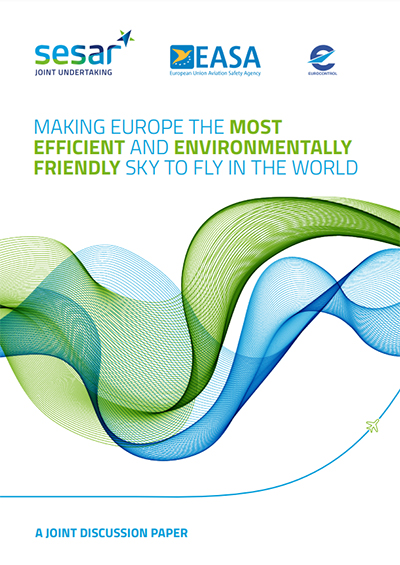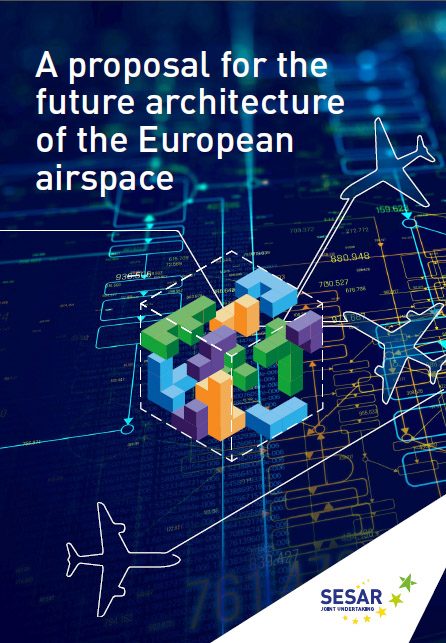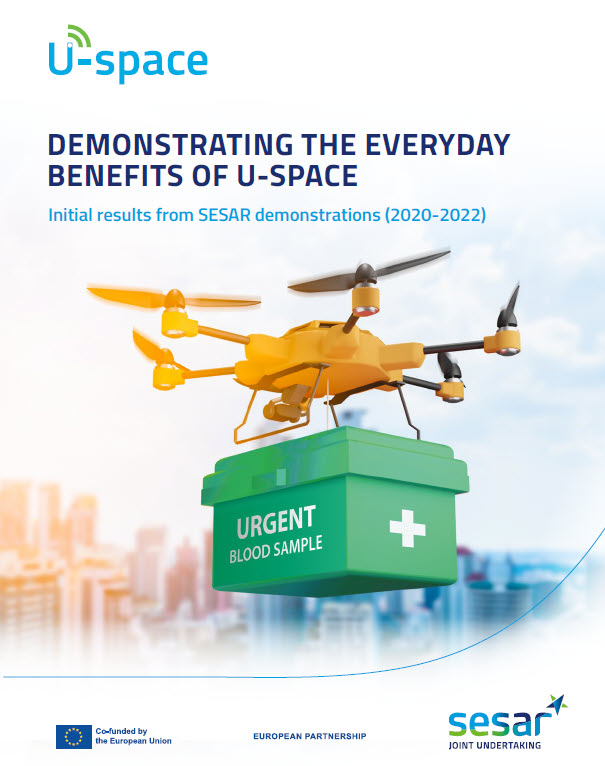Partners from across Europe’s aviation industry have concluded seven years’ intensive research under the SESAR 2020 research and innovation programme to deliver 136 solutions ready for market uptake. Once implemented, these new technologies and procedures are expected to reduce emissions, optimise capacity and improve the efficiency of air traffic management operations in the safest possible manner. The recently started follow-up programme, the Digital European Sky, aims to accelerate this innovation lifecycle process by testing delivered solutions using Digital Sky Demonstrators in live operational environments, alongside further research supporting the transition towards higher levels of automation.
Over the course of the programme SESAR 2020 pooled the knowledge and skills of 2 000 industry experts in 150 research projects. Despite delays during the COVID pandemic, cross-industry partnerships completed 1,000 validation exercises and flight trials in dozens of locations across Europe in real-life operations, sharing the experiences of controllers, pilots, engineers and researchers. The findings are documented in the SESAR Solutions Catalogue which details those solutions ready for industrialisation along with candidate solutions subject to further research.
Andreas Boschen, SESAR Joint Undertaking Executive Director: “SESAR 2020 delivered on its promise to deliver benefits for safety, the environment, efficiency and capacity. Building on these strong foundations, the Digital European Sky successor programme is accelerating this transformation towards smart, sustainable and resilient air traffic management.”
The combined number of solutions delivered to date represents three-quarters of the key solutions needed to bring about the transformation changes outlined in the Airspace Architecture Study (AAS). A further 58 projects launched by the Digital European Sky programme in summer 2023 are continuing research and innovation in order to realise the full vision of the European ATM Master Plan, Europe’s agreed roadmap for ATM modernisation.
Herman Mattanovich, Frequentis CTO: “SESAR 2020 enabled stakeholders to work together towards a solution. We have completed 80% of the Digital European Sky, the next 20% will be the most challenging.”
SESAR 2020 made significant progress in a range of areas, from virtualisation and interoperability, to trajectory-based operations and enabling technologies for airport total management. The programme leveraged modern technologies to support the future airspace architecture and developed capabilities to address today’s challenges of resilience, scalability, climate impact and the integration of new entrants.
The shared knowledge and experience from the collaborative research now informs the Digital European Sky innovation pipeline and supports the ambition to make Europe the most efficient and environmentally-friendly sky to fly in the world.
Advanced air traffic control tools
Among high profile developments are virtual centres, which give air navigation service providers added flexibility and resilience by decoupling services such as flight data, radar and weather information from the physical controller working position to increase service continuity. SESAR 2020 tested different architectures and delegated airspace between different ATM service providers to demonstrate the technical viability of the concept. The next steps with the Digital European Sky are to test the free flow of cyber-secure data among trusted users across borders in two projects, VITACY and ISLAND, which aim to address capacity-on-demand.
Friedrich-Wilhelm Menge, DFS CTO: “Changing the technological legacy is key to progress. We need to decouple the human-machine-interface and move to cloud technologies and service-oriented architecture.”
Another key achievement has been in the area of trajectory-based operations to reduce controller workload and increase airspace capacity by establishing an integrated view of all flight trajectories, including military, based on four-dimensional (4D) aircraft trajectories (latitude, longitude, altitude and time). SESAR 2020 industrial research validated the downlinked aircraft trajectories from the flight management system to the ground to enable controllers to identify inconsistencies between the flight plan and the route flown. The research also developed technical specifications for the European datalink common service to distribute data downlinked from the aircraft to air traffic control, Network Manager, airlines and other parties.
Smart airports
Airport operations experienced a step-change as a direct result of technology developed by SESAR 2020 industrial research that enables data sharing between the airport operations plan (AOP) and network operations plan (NOP) using system wide information management (SWIM). The total airport management (TAM) solution increases predictability and supports collaborative decision-making based on timely information.
Philippe Laborie, Paris-Orly Airport Deputy Director: “SESAR 2020 enabling technologies increase our control of operations. The more we integrate, the more we can improve performance.”
Remote tower technology, with the programme delivering the multiple remote tower module, pools air traffic control officers (ATCOs), who provide their services to airports on demand. When combining resources in a single centre, controllers can also assist each other if the traffic at a particular airport peaks. Even air traffic services at medium airports could benefit by connecting to a large remote tower centre as they could operate more efficiently, while helping the ATCOs to better balance their workload using sophisticated role management.
Significant advances were made in many other areas, including runway optimisation and airport surface management, and advancing solutions targeting all sizes of airports, including regional airports.
Accommodating future mobility and expanding to new horizons
A sector quick to embrace digital technology is the unmanned market where new entrants already offer emergency and medical services as well as inspection, survey and parcel deliveries. In 2016, SESAR 2020 delivered Europe’s U-space Blueprint, setting out how drones will be integrated into the lower airspace; and the concept of operations (CONOPS) detailing what U-space means operationally in the context of EU U-space regulations. Between 2017 and 2022, extensive flight trials in urban and non-urban environments helped to shape U-space services and concept definition by delivering deployable solutions to help scale up this sector.
Hendrik-Jan Van Der Gucht, Skydrone Managing Director: “U-space is speeding up the digitalisation process and paving the way the digital transformation of ATM and aviation generally.”
Extending safe access to higher airspace, SESAR 2020 delivered a concept of operations(13) to enable scalable operations above the flight levels where conventional air traffic operates. An array of new vehicles ranging from unmanned balloons, airships and solar planes to super- and hyper-sonic vehicles are seizing new business opportunities in this space, leading to the ECHO 2 Digital European Sky follow-on project(.
Automation and artificial intelligence
SESAR 2020 has delivered solutions to increase automation in many areas, for example introducing machine learning to reduce message corrections in automatic speech recognition. The SESAR tool, which is ready for industrialisation, decreases speaking time by a factor of 30 and enables controllers to deliver more timely instructions. Workload is also lowered by the SESAR algorithm that removes potentially non-conflictual aircraft from the controller’s screen by turning the label to a fade-out colour. Attention guidance offloads monitoring tasks based on accurate flight profiles and tactical events, potentially increasing airspace capacity.
Marc Baumgartner, IFATCA: “Aviation as a whole has benefited from SESAR, with many solutions deployed and in use at airports and network level, but not so much by air traffic control. Implementing this digital structure is a key objective for the Digital European Sky.”
Extensive research has been carried on a wide range of AI-enabled tools addressing traffic hotspots, surveillance, runway optimisation and dynamic configuration, among other areas. The results from SESAR 2020 are feeding into further research and innovation in the new programme
Addressing climate impact
Analysis suggests that introducing new technologies and procedures into ATM can provide a significant and immediate contribution towards making aviation climate neutral, while work progresses on other high impact innovations, such as sustainable aviation fuels and new aircraft. For example, it is estimated that already delivered SESAR solutions could result in a 4% reduction in CO2 emissions per flight and that the solutions already implemented through Common Project 1 have contributed 2% in emissions reductions per flight.
Much of the focus of these solutions has been on making taxi-out and runway operations more predictable and efficient, reducing holding patterns and vectoring in terminal airspace upon arrival, and optimising trajectories with i4D, among other technologies. All of which bring fuel savings. Some of these solutions also support local environmental performance objectives through noise mitigation and air quality improvements.
European Commissioner for Transport, Adina Ioana Vălean: “Air traffic management can clearly play a significant part in both reducing aviation emissions and supporting smart and integrated transport solutions. Up to 10% of CO2 emissions could be avoided by increasing the efficiency of air traffic management in European airspace, as envisaged by the Single European Sky framework.”



